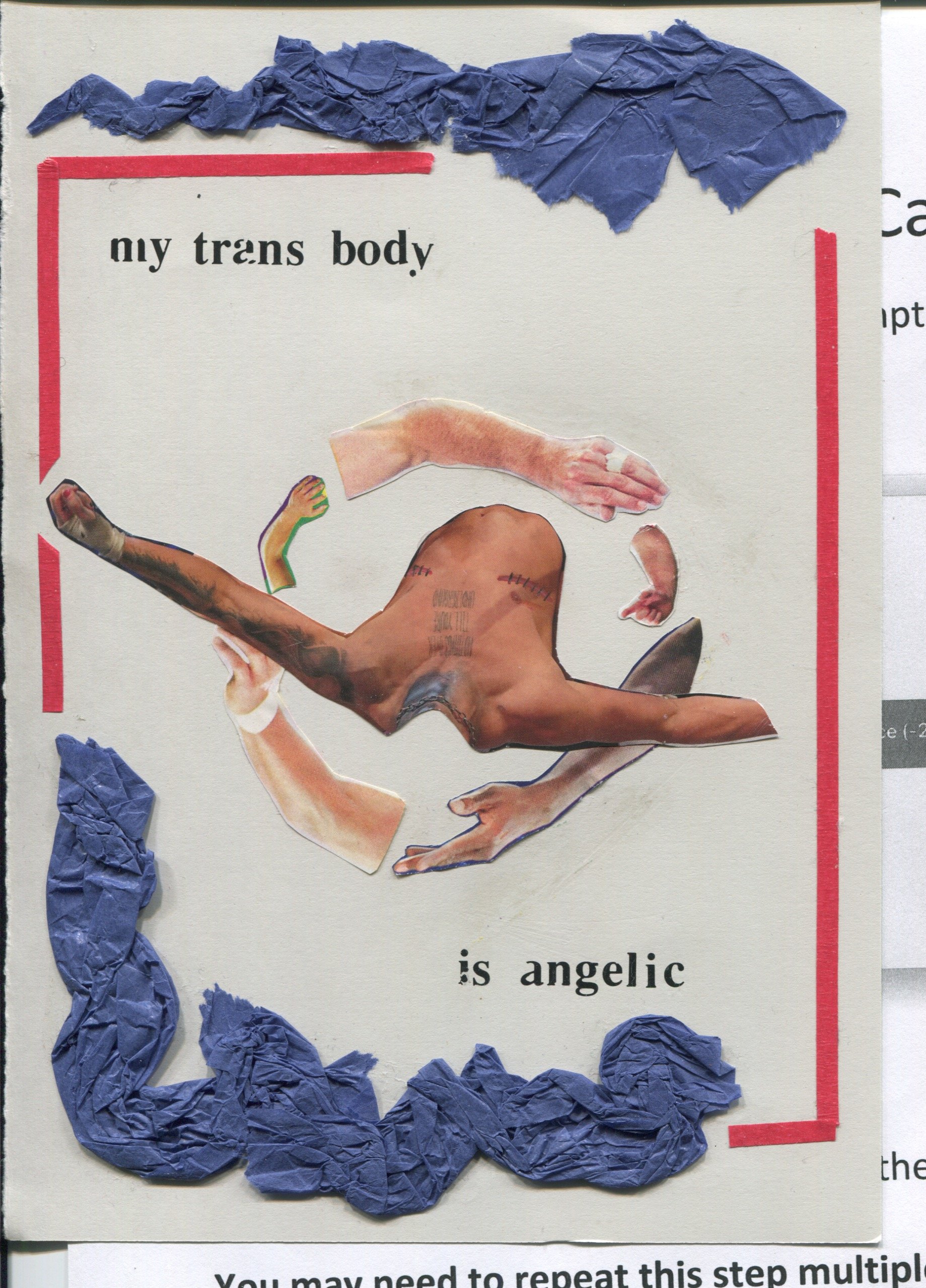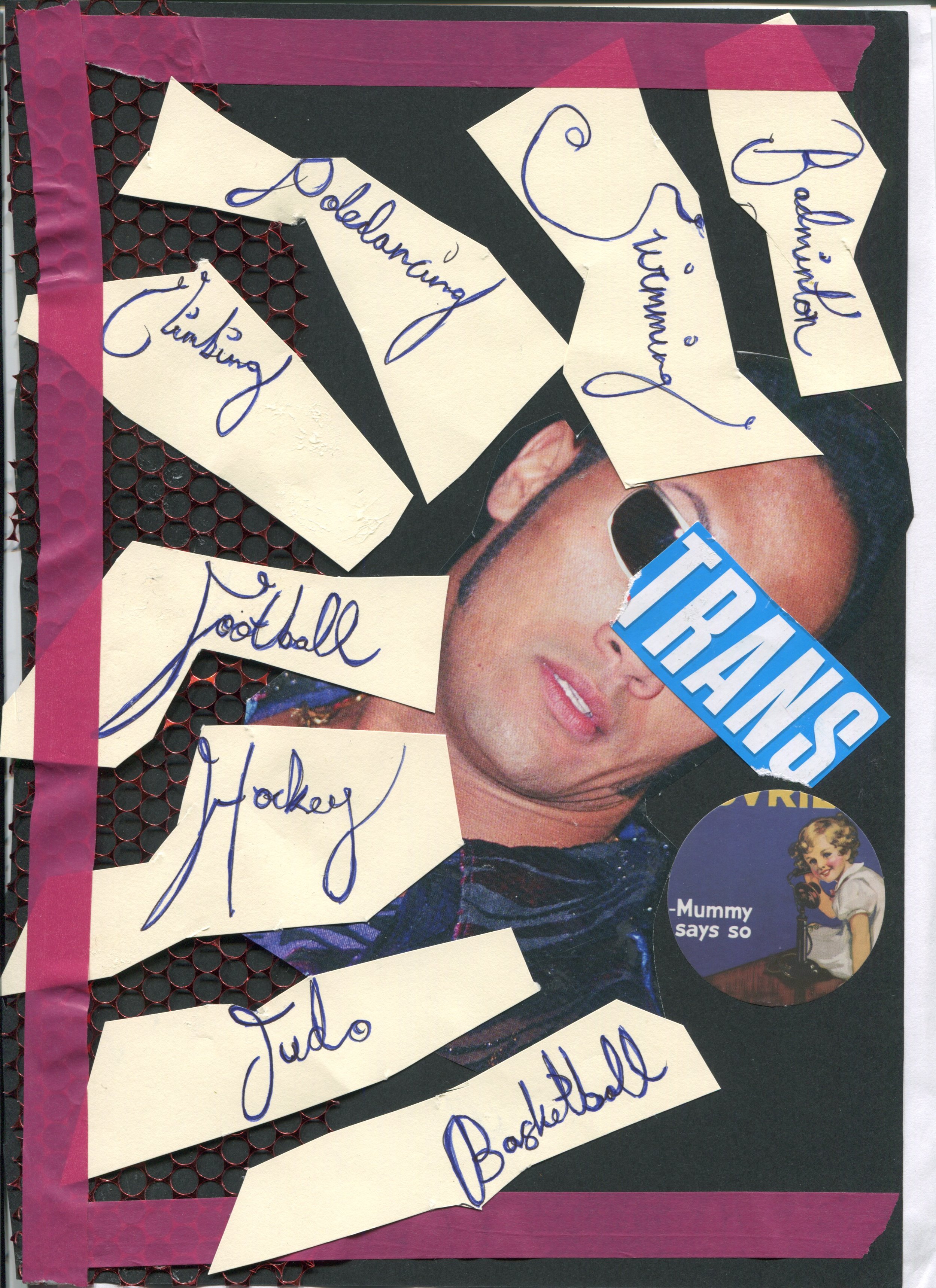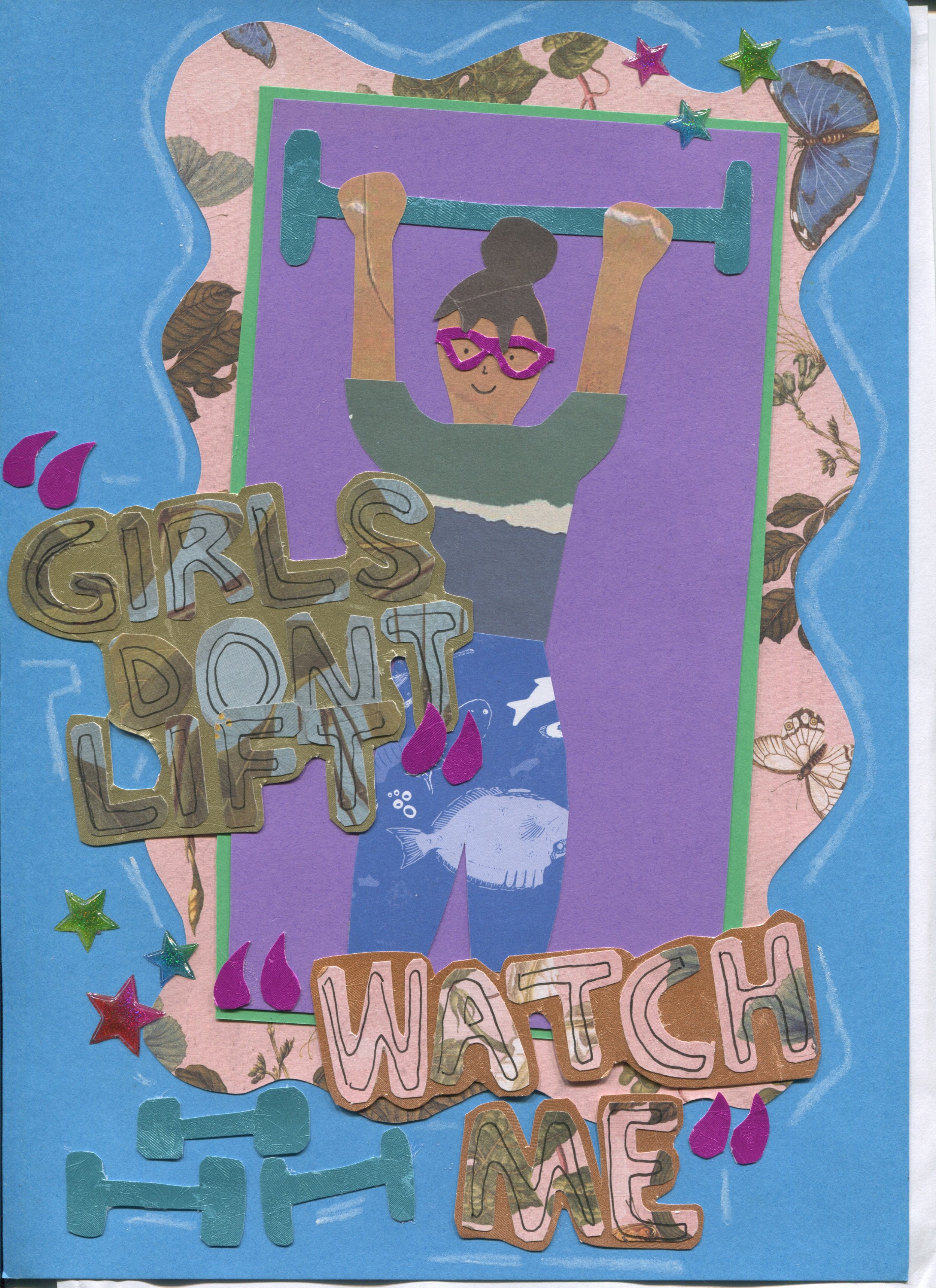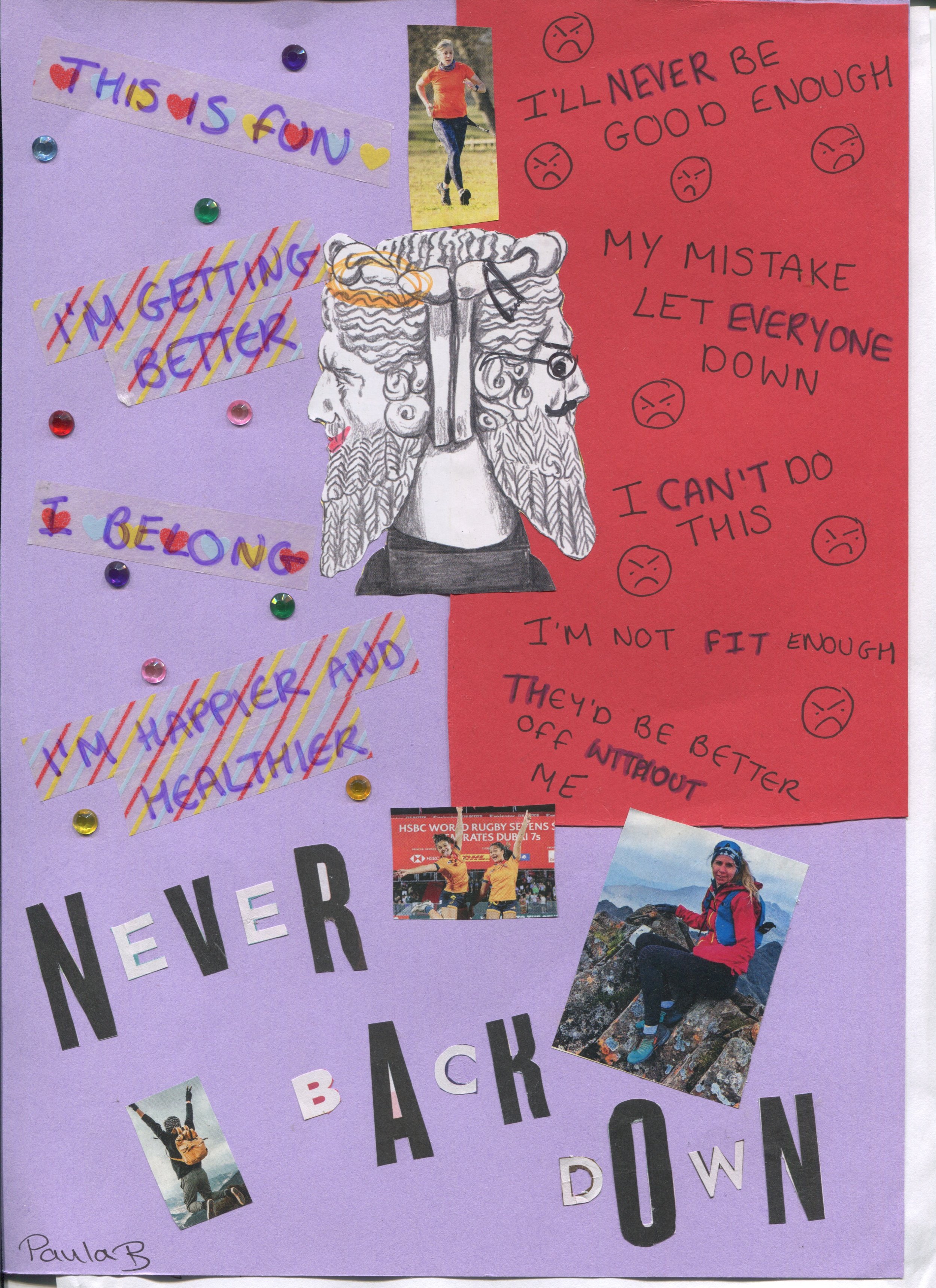Hello and welcome to sportspeople
A zine for the audiences of Sportsperson.
If you’ve seen the show, you’ll know I have a complicated relationship with sports. I’ve never been very good at them. I’ve never enjoyed doing them. I’ve always felt a lot of pressure to participate anyway. I have had to unlearn society’s expectation of being a certain kind of fit and healthy. I have tried to relearn enjoying being in my body and doing physical things because I choose to, not because I feel I have to. I have come to accept that I might just (sort of (maybe)) be a sportsperson.
A lot of my discomfort around sports is to do with gender. I wasn’t kidding when I said you need a gender to play every sport. When I signed up for the Ealing Half Marathon, I had to specify whether I was male or female. There were no other options. I had to pick a side. It was the same when I signed up to be a referee or wanted to use the changing rooms at the gym. When I played badminton, I was told “women play at the front, men at the back” because you play in a mixed team and the roles are determined by who people think you are not your skill set or size.
I feel the rules of gender most keenly when playing sport. Whether I’m talking about sport or being shut out of conversations about sport or trying to play sports and being heckled whilst playing or buying sports clothing and being chafed or constantly having to pull my shorts out of my bum, I feel wrong. I feel too much and too awkward. I feel like everybody is looking at my big, red, sweaty face and secretly thinking that I’m ridiculous and delusional. Because of sport I know there is a certain kind of masculinity I can never obtain, because it’s the kind you have to be invited into. Because of sport, I know that I am not, nor will I ever be, feminine. Because of sport I know that I do not fit.
In many ways this is because sport has been designed to enforce gender norms. Sports have been invented and developed and funded to help instil the correct values of masculinity in little boys and police the bodies of (trans, cis and intersex) women and people who exist outside or move within the gender binary. The separation of gender in sport helps to reinforce the idea that women are inherently weaker and slower than men and that women who are strong and fast are actually not women at all. Sports get to be exempt from gender equality policies. Sports get to define what it means to be a woman. Sports get to force people to change their bodies, sometimes irreversibly, just so they’re eligible to play.
As part of developing Sportsperson, I wanted to work with other people to explore the problems and barriers that gender creates and enforces in sport (and that sport creates and enforces in gender) but also try to understand why some of us still want to participate in organised sports. I came together with trans sportspeople (and trans very much not sportspeople) as well as the Kilburn Cosmos Ladies rugby team, many of whom who are cis, to express the intersection between gender and sport. The art created across three zine workshops records our thoughts on how it feels to not be allowed in, to have our bodies monitored and controlled when we’re just trying to play but also what it feels like to connect to your body and be a part of a team.
If you love sports, like I apparently do now, then I hope you enjoy this zine and that it inspires you to help make sports a better, more inclusive space.
You can scroll through all of the art created at the zine workshops below.
Or, you can listen to an audio description of the artwork.
Timeline
Pre 1800s: sports exist everywhere in many different forms
1800s: sports are a tool for teaching boys masculinity now that their fathers are in the factories and not the farms. If girls are permitted to play, they must play different, softer sports.
1896: first modern Olympics, no events for women.
1936 Berlin Olympics: Helen Stephens wins the 100m and is accused of being too manly if not an actual man. However, she passes a behind doors sex test.
1948 London Olympics: female athletes required to have a certificate of femininity.
1960s: reacting out of fear of Communist totalitarian regimes eroding gender roles and cheating, the West pushes for doping and sex testing and regulation.
1966 Budapest European Championships: women required to parade naked for a panel of female doctors in order to confirm their femininity. 6 athletes from the Eastern bloc withdraw from the competition. Similar tests described at other competitions across ‘66 and ‘67.
1968: IOC introduces the Barr Body test and it is used in various forms to identify several athletes with intersex variants but no men pretending to be women.
1977: Renee Richards sues the USTA for requiring athletes to pass this test before competing in the US Open. The NY Supreme Court rules in her favour, determining testing to be discriminatory and a human rights violation.
1991: IAFF abandons sex testing because athletes now have to pass urine in front of doctors for anti-doping tests and so cannot hide their genitalia.
1992 Albertville Winter Olympics: PCR testing is used to identify male DNA sequences, however it is later suspected of causing multiple false positives due to a flaw in design.
1999: IOC stops routine sex testing, largely due to costs, but still tests on a case by case basis.
2003: first policies governing trans athletes introduced. IOC requires athletes to have undergone sex reassignment surgery, have legal recognition of their gender and have been on hormones for two years.
2009 Berlin World Championships: Caster Semenya runs the 800m too quickly and too masculinely.
2015: After protests from Chris Mosier et al., the IOC modifies guidelines such that trans women must now declare their gender, not change it for 4 years and have testosterone levels lower than 10nmol/L. Surgery is no longer required.
2021: several trans and non-binary athletes compete at the Tokyo Summer Olympics.
You can read the full interview here.
Thank yous
This zine was made possible thanks to the generous contributions of London Friend, The Apple Tree and Kilburn Cosmos and was funded by Arts Council England.
It featured contributions from:
Aaron Bailey
Aleks Jagielski
Amanda
Amy
Anile Amastazja Jagielski
Aven
Casey Leonard
Catherine
Darren
Gray Felton
Hana Ayoob
Jemma
Juliet Oman
Kate
Marlowe
Myfanwy
Oakley Swinson
Orlen Crawford
Paula B
Rachel
Sofia
Tori
Young Peter Strange
Joz Norris
Joz Norris is the director extraordinaire of Sportsperson. He helped me turn my funny-story-about-a-time-I-fucked-up-plus-some-other-tangetially-related-things into a way of communicating how uncomfortable I feel about labels whilst still loving the messy and expansive identities that sit behind them and I am very, very grateful for all the work he has put into this project. He’s also very funny (Comedian’s Choice 2019 don’tyaknow) and has his own show (Blink, Pleasance Jack Dome, 20:20) here at the Fringe so you should all go see it.
@JozNorris
Hana Ayoob
Hana Ayoob ran all of our zine making workshops. She created a wonderful space for people to get stuck in and explore their experiences through art and was a lot of fun to work with. I told everyone that she was a professional zine maker but, actually, she’s a very talented illustrator, science communicator, gig organiser, MC, maker, crafty person and podcaster. She runs very funny online shows about science and you should definitely watch them from the comfort of your own home.
@Hana_SciArt
Izzie P
Izzie made this zine. They are an artist, illustrator, doodler and humongous comedy nerd. I was very excited when he said he’d work on this project because, despite their opinions on Thomas Becket, I really like his work. Izzie did all the scanning (amazing) and arranging (beautiful) and illustrating (incredible) that you see here and also gave me lots of great advice. You should follow him on social media and look at all their art (and be like “wow, I love it”).
@KentishIzzie
Susanna Clark
Susanna is the puppet master behind this whole project. Through her company Ingenious Fools, she has organised all of the venues, coordinated all of the people and secured the Arts Council England bid which funded the whole damn thing. And, she did all of this whilst making an adorable little baby before passing the baton on to the startling competent Benjamin Alborough.
@IngeniousFools_ @BJAlborough
Sam Nicoresti
Sam Nicoresti aka Leicester Square New Comedian 2021 aka comedy’s odd prince of overthinking aka the mastermind behind my poster is a graphic design wizard and a very kind human. Thanks to Sam and the very talented Miranda Holms (@mirandaholms) photographer extraordinaire, my pocketful of inarticulate thoughts and awkward face got transformed into the lovely, lovely sunshine image that got you through the door. You can, and should, see the multimedia journey that is Cancel Anti-Wokeflake Snow Culture (PBH Banshee Labyrinth 20:55) and hire Miranda for all your photography needs.
@samnicoresti
P.s., here are the time stamps for each piece:
00:14
00:52
01:57
03:05
03:36
04:14
04:59
06:37
08:20
08:55
09:32
11:55
12:50
13:35
14:37
15:16
17:45
18:20
19:48
20:38
23:45
25:44
27:10
27:51
29:16
32:50
38:02
39:37
40:30
41:34
44:43
45:37
46:12














































